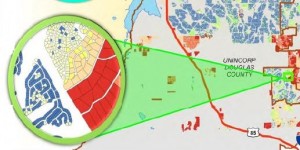![]()
In the GIS (Geographic Information Systems) world, the uses of the technology are seemingly endless. Professionals who use the technology have a good grasp of what it is and how it supports decisions and research. Outside of this group I am often approached with the basic question that goes something like this, “I know GIS can do a lot — but what is it”? As the years have gone by I have fielded a number of these questions and have been able to focus in on some tips for a GIS elevator pitch.
1st Tip: Don’t be smart, be clear. We all know GIS professionals are smart. Technically smart doesn’t communicate well. Your goal is to be understood. Acronyms are alphabet soup that hinder the conversation. Using metaphors or examples without technical terms will win the day. People shut down when they hear things like SQL Server, post GRES or GUIs. This type of language will engage your audience and further your conversation. You don’t want your listener regretting that they asked you a question.
2nd Tip: GIS is about the power of where. The general questions people ask come in the framework of who, what, when where and how. GIS leverages the power of where. Explain that everything happens somewhere. Trillions of points of data can be identified by where it happened and thus you can tie seeming random bits (not bytes) together because of the where.
3nd Tip: Make your examples common. I often use examples that are common to all walks of life. Mainly I use examples from neighborhoods. A good start is to talk about a house, a school or a park. I’m a practitioner and do not mind if you take my examples. Say something like, “Mapping allows for instant understanding, like a picture. If you had a spreadsheet of all city properties and their trash bills, you wouldn’t be able to understand it. If you map it, you could see some blocks pay $100.00 while others pay $60.00. GIS would let you see the pattern and you could go talk to the folks paying $60.00 and ask who their provider is.”
These are some tips that have helped me satisfy people’s general curiosity about the technology and have allowed them the not only understand but to value it as a resource.
Derek A Stertz is part of the GovLoop Featured Blogger program, where we feature blog posts by government voices from all across the country (and world!). To see more Featured Blogger posts, click here.





Excellent article Derek. I think every practitioner of GIS has experienced something similar, as in the typical what do you do for a living question and the blank stares and muffled expletives that usually follow the answer: geospatial analysis or geographic information systems professional because they know they have ‘nothing’ they can say beyond “oh”.
Great article on how someone might approach the explanation of GIS, but I thought you were going to explain just what the heck GSI is…and why/how it is used. I think I will just Google it and see what Wikipedia has to say.